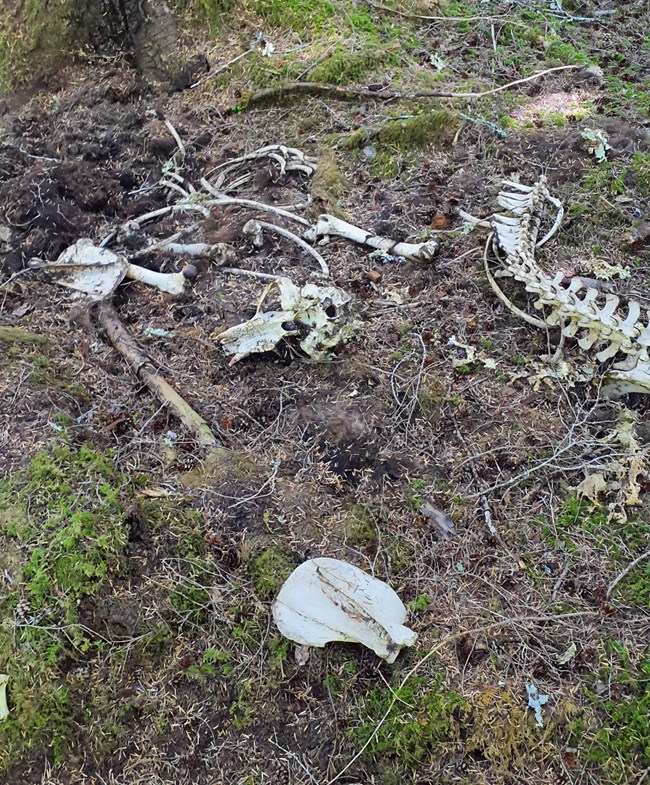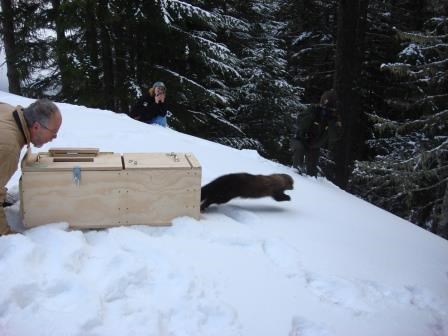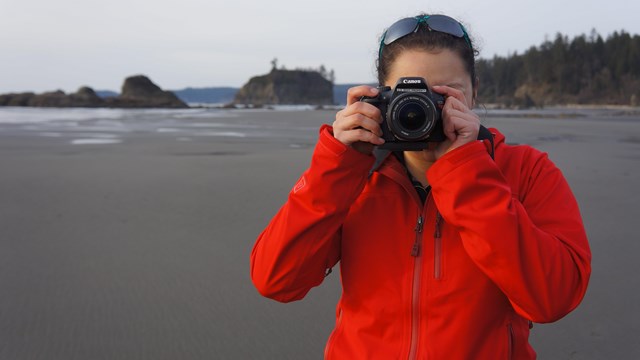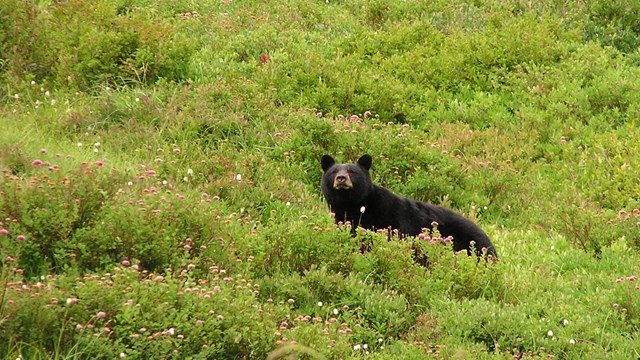|
A love of wildlife might be one of the things that brings you to Olympic National Park. It's what draws many of us who work here as well! But a national park works very differently from places like wildlife sanctuaries and zoos, where the animals live in captivity and their daily lives and needs are closely tended to. A national park is managed to exist in a much more natural state, and the animals there are wild creatures who live, and die, due to natural processes. Sometimes - often - that natural life is a pretty harsh one. Animals get separated from their groups, young animals may become separated from their mothers, and animals can get hurt. So when do park staff intervene, and when do they let nature take its course?

NPS Photo/ Laura Ringeisen Our Mission: Preservation, Not Rescue and RehabilitationMore than 95% of the park is managed as designated wilderness and our focus is on sustaining viable populations of native wildlife species, rather than protecting individual animals. Animals roam freely on a landscape not dominated by humans. An animal’s survival depends on its own daily decisions and natural selection. Animals with traits that make them better adapted to the environment will tend to survive, reproduce, and pass on their genetic characteristics more than animals without those traits. Through this process, natural selection shapes the behavior of wildlife. Actions like feeding, husbandry, and rehabilitation contradict the National Park Service mission by shielding animals from the forces of natural selection and creating a zoo-like atmosphere where animals require assistance or protection from people. When We Intervene and WhyNational Park Service policy does not allow intervention in nautral biological or physical process, except
To protect human safety, Olympic National Park managers have intervened when animals become human food-conditioned (i.e. see humans as a food source), have become agressive due to habituation, or have attacked. Park managers try first to resolve the human causes of any conflict, in some cases this may lead to temporary closures. It is one reason why the park has food storage policies. If the issue persists experienced park managers may haze the animals. Hazing is the use of non-lethal negative stimuli to deter wild creatures from being habituated. Tools used for hazing might include using movements that intimidate an animal, snapping a loud plastic bag, throwing rocks in the vicinity, using a slingshot, a paintball gun, or even bear pepper spray. If managing humans and hazing does not resolve the issue the park may have to lethally remove an animal for public safety. 
NPS Photo Olympic National Park biologists have worked to promote restore natural ecosystem function and health in alignment with NPS policy as described above. To accomplish this, we intervened in natural processes in the short term in order to create a more natural system in the long term. Our actions involved assisting, protecting, or rehabilitating sensitive species and natural systems by:
Death is a Necessary Part of NatureIn the wildness of Olympic, animals that are vulnerable or make bad decisions become food for others. It can be difficult to watch nature take its course, especially when young animals are involved and human actions may have influenced the outcome. However, each year animals have more offspring than can possibly survive. The death of some animals is a necessary part of sustaining our populations of predators, scavengers, decomposers and, eventually, herbivores once the nutrient cycle comes full circle. Olympic is not a zoo or an animal park; it is the wilderness home to countless creatures living in their own environment on their own terms. The Resource is WildnessThe importance of Olympic National Park is not only in preserving the individual features that make Olympic unique. Rather, the park’s significance is also in preserving natural ecological processes “for the benefit and enjoyment of the people.” As park service ecologist Don Despain once said, “The resource is wildness.” We encourage you to celebrate this wildness: the opportunity to see the drama of the natural world unfold is an uncommon experience in our increasingly urban society. 
Olympic NP Animals
The park is home to hundreds of animals, from mollusks to mammals. 
Ethical Wildlife Viewing
Animals in parks are wild—Visitors are responsible for their own safety and for the safety of the animals, too. 
Wildlife Safety Page
A wildlife sighting can be the highlight of your trip, but do you know the best ways to stay safe? |
Last updated: March 27, 2025
